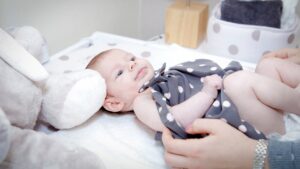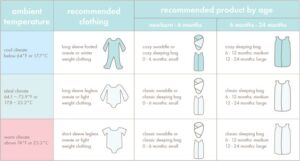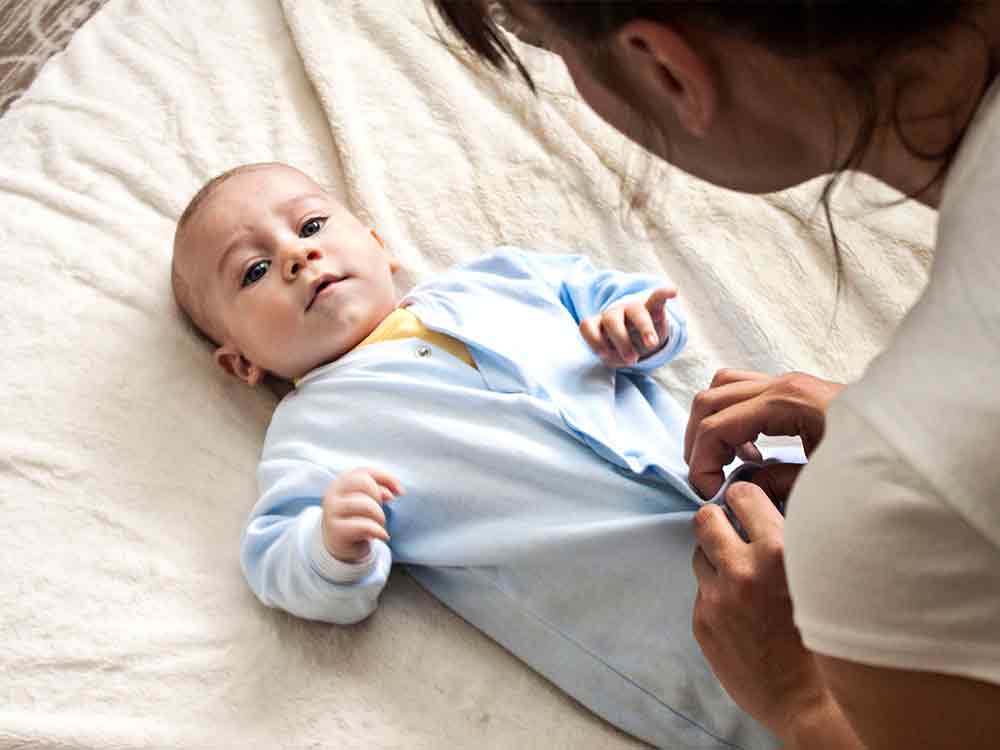How to Dress Baby for Sleep: A Comprehensive Guide for Parents
Sleep is essential for your baby’s growth and well-being, but ensuring your little one sleeps comfortably can be tricky, especially for new parents. A crucial part of this equation is how to dress your baby appropriately for bedtime. Too many layers can cause overheating, while too few might leave your baby feeling cold. This guide will help you navigate this parenting challenge with confidence.
Why Dressing Your Baby for Sleep Matters
Babies cannot regulate their body temperature as efficiently as adults, making them more susceptible to overheating or getting too cold. Proper sleepwear ensures:
- Comfort: Helps your baby settle and stay asleep longer.
- Safety: Reduces the risk of overheating, a contributing factor to Sudden Infant Death Syndrome (SIDS).
- Peace of Mind for Parents: Knowing your baby is dressed appropriately means you can sleep easier, too.

Key Factors to Consider When Dressing Your Baby for Sleep
1. Room Temperature
Room temperature plays a pivotal role in deciding what your baby should wear. The ideal temperature for a baby’s room is between 68°F to 72°F (20°C to 22°C).
- Warm Rooms (72°F or higher): A light onesie or sleep sack with a low TOG (Thermal Overall Grade) rating.
- Cool Rooms (68°F or lower): Use a long-sleeved onesie, footed pajamas, and a thicker sleep sack or swaddle.
2. TOG Rating Explained
The TOG rating measures the warmth of a fabric. Here’s a quick guide:
- 0.2-0.5 TOG: Lightweight fabrics for hot climates or summer.
- 1.0 TOG: Moderate warmth, suitable for spring and autumn.
- 2.5 TOG: Heavier materials for cold winter nights.
3. Your Baby’s Age and Mobility
- Newborns (0-3 months): Swaddling is recommended to mimic the womb’s snug environment. Use lightweight swaddle blankets or sacks.
- Older Babies (3+ months): Transition to a sleep sack or wearable blanket to allow for movement while maintaining warmth.
Seasonal Dressing Tips for Baby Sleep
Dressing Baby for Summer Nights
During summer, prioritize breathability and avoid over-layering.
- Choose light cotton onesies or short-sleeved bodysuits.
- Opt for a 0.2-0.5 TOG sleep sack for added comfort.
- Avoid blankets; they increase the risk of overheating.

Dressing Baby for Winter Nights
Cold weather calls for layering, but with care to prevent overheating.
- Use footed pajamas made of fleece or thermal materials.
- Add a 2.5 TOG sleep sack or swaddle over the pajamas.
- Avoid hats or scarves; they can pose a suffocation hazard.
Dressing Baby for Spring and Autumn
Transitional seasons require flexibility.
- Choose long-sleeved onesies paired with a medium-weight sleep sack.
- Monitor the room temperature closely to adjust layers as needed.
How to Check if Your Baby is Too Hot or Cold
Use these cues to ensure your baby is comfortable:
- Signs of Overheating: Sweaty back, flushed skin, rapid breathing, or fussiness.
- Signs of Feeling Cold: Cool hands, feet, or nape of the neck.
Always check your baby’s temperature by feeling their chest or back, not their extremities.
Safe Sleep Guidelines for Babies
When dressing your baby for sleep, keep safety in mind:
- Avoid Loose Blankets: Instead, use sleep sacks or swaddles.
- No Hats Indoors: Babies release heat through their heads.
- Ensure a Snug Fit: Pajamas and sleepwear should be snug to avoid covering the face.
- Back to Sleep: Always place your baby on their back to sleep.
Common Mistakes Parents Make When Dressing Babies for Sleep
1. Over-Layering
Adding too many layers can cause your baby to overheat. Stick to the recommended TOG ratings and room temperature guidelines.
2. Ignoring Room Conditions
Using heavy pajamas in a well-heated room can be uncomfortable for your baby. Always adjust sleepwear based on the environment.
3. Using Unsafe Materials
Avoid sleepwear with strings, hoods, or other choking hazards. Opt for baby-safe, flame-resistant materials.

Top Baby Sleepwear Recommendations
To make your shopping easier, here are some tried-and-true sleepwear options:
| Brand | Best For | Key Features |
|---|---|---|
| Love to Dream | Swaddling Newborns | Easy zip-up design, snug fit |
| Halo SleepSack | Winter Wear | High TOG rating, soft fleece material |
| Burt’s Bees Baby | Summer Pajamas | Organic cotton, breathable fabric |
| Kyte Baby | All-Season Sleepwear | Bamboo material, natural temperature control |
When to Seek Advice from a Pediatrician
If your baby frequently wakes up sweaty, seems unusually fussy, or shows signs of sleep disturbances, consult your pediatrician. They can help rule out any underlying issues or provide tailored advice on sleepwear.
Conclusion
Dressing your baby for sleep doesn’t have to be a guessing game. With a little knowledge and the right sleepwear, you can ensure your baby stays comfortable, safe, and cozy through the night. Remember to monitor room conditions, use appropriate TOG ratings, and follow safe sleep practices to create an ideal sleep environment for your little one.
FAQs
1. Can my baby wear socks to bed?
Yes, if the room is cool and your baby’s feet feel cold. However, footed pajamas are a better option for younger infants.
2. How do I know if my baby is too warm?
Feel their chest or back. If they’re sweaty or their skin feels hot, remove a layer immediately.
3. Is swaddling necessary for newborns?
Swaddling can help newborns feel secure and sleep better, but stop swaddling once they show signs of rolling over.
4. Can I use a blanket instead of a sleep sack?
It’s safer to use a sleep sack to reduce the risk of suffocation or entanglement.
5. Should my baby wear a hat to sleep in winter?
No, hats can cause overheating and increase the risk of suffocation.

